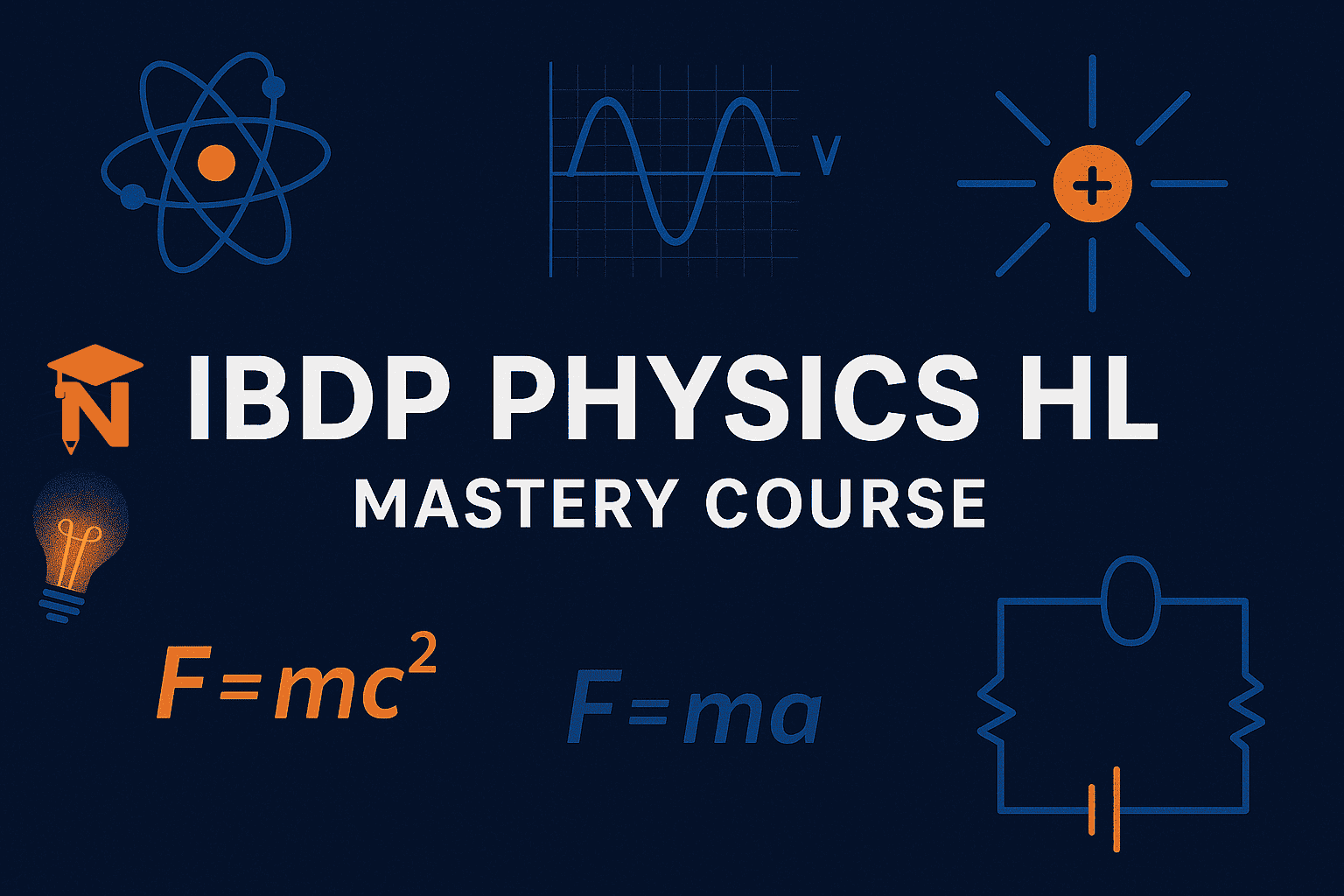
About Course
Master IBDP Physics HL with this comprehensive, self-paced course designed for deep understanding and exam success. The course includes clear, concise notes, paper-style MCQ questions, data-based Paper 1B questions, and structured short-answer questions from Paper 2. With over 100 Internal Assessment (IA) topics and research questions, students can sharpen their skills and boost their grades from home, school, or anywhere. Perfect for independent learners aiming to excel in their IBDP journey.
Course Content
A.1 Kinematics
-
Kinematics Notes
-
Kinematics Paper 1A – MCQ Part 1
A.2 Forces and momentum
A.3 Work, energy and power
A.4 Rigid Body Mechanics
A.5 Galilean and Special Relativity
B.1 Thermal Energy Transfers
B.2 Greenhouse Effect
B.3 Gas Laws
B.4 Thermodynamics
B.5 Current and Circuits
C.1 Simple Harmonic Motion
C.2 Wave Model
C.3 Wave Phenomena
C.4 Standing Waves and Resonance
C.5 Doppler Effect
D.1 Gravitational Fields
D.2 Electric and Magnetic Fields
D.3 Motion in Electromagnetic Fields
D.4 Induction
E.1 Structure of the Atom
E.2 Quantum Physics
E.3 Radioactive Decay
E.4 Fission
E.5 Fusion and Stars
Student Ratings & Reviews

No Review Yet
